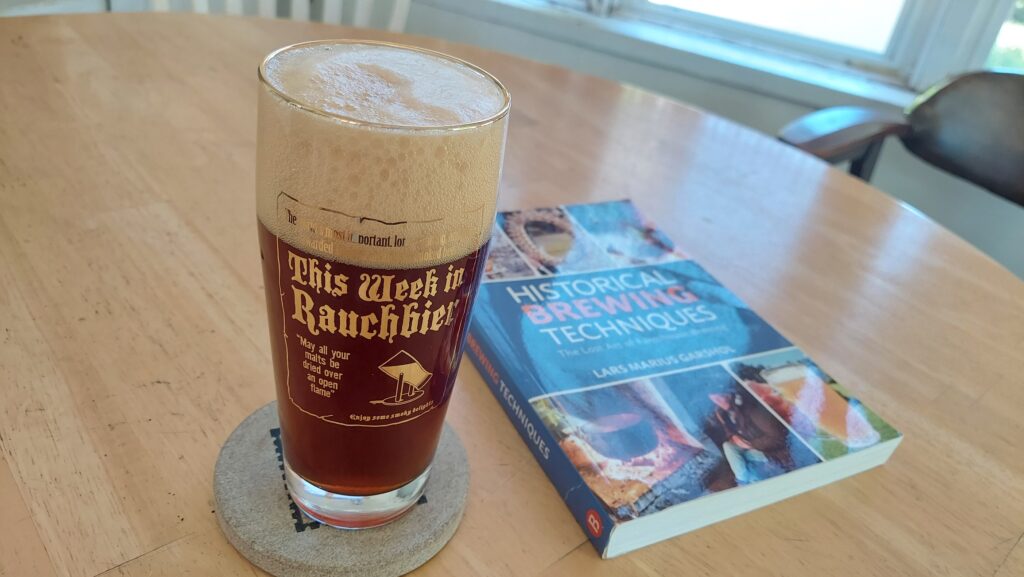
This recipe comes to us from Lawton Boone and Jackson Stucker, homebrewing buddies from the Chicagoland area. It was inspired from Jørund Geving’s Stjørdalsøl in Lars Marius Garshol’s book Historical Brewing Techniques, taking the traditional Norwegian farmhouse recipe and brewing it using ingredients available in the U.S., namely Nordic-inspired alderwood-smoked malt from Sugar Creek Malt Company, foraged juniper, and kveik. Even for smoked beer lovers and brewers, this beer brewed with 100% of Sugar Creek’s alderwood-smoke malt might be unlike anything you’ve ever had before. The smoke flavor is deep and luscious, reminiscent of the smoked fish and meats of Norway, with a lovely piney influence from the juniper. Due to the intensity of the smoked malt flavor in this 100% version, the guys suggest that homebrewers consider starting with a smaller batch of this beer.
See this Chop & Brew video for more brewing process discussion and tasting notes.
All-Grain | 4 Gallon Batch
OG: 1.072
FG: 1.012
ABV: 7.88%
Malt & Fermentables
- 10 lbs of Sugar Creek Maltings Stjordal Malt
- 2 lbs of Table Sugar
Hops
- 1 oz Saaz (3.5%aa)
Additional Ingredients
- Juniper branches with berries (locally harvested)
Process
Line the false bottom of mash tun with half a grocery bag of juniper branches (and berries) to make a natural type of infuser/filter. Mash in grains at 152F. Let mash rest for 90 minutes.
Sparge and collect wort in boil kettle.
Add table sugar to wort as it’s coming up to a boil.
Bring to a boil and boil for 90 minutes.
10 minutes to flame-out: add Saaz hops.
Brewer’s Notes from Lawton:
It was the middle of winter here, so I left it out on the porch to cool down to ~90F (took about 4-5 hours) and then brought it inside and pitched Sigmund Gjernes Dried Kviek Flakes sourced from the Kviek Shop.
It fermented within a few days. I put it in an insulated fermentation jacket to help keep the temperature higher, although it likely dropped a bit with my apartment being around 68F at the time. That being said, with the high pitching temperature and the vigor of this yeast it would be surprising if it got below 75F during active fermentation. I think this temperature range might have helped with the yeast from expressing too much and having a ester vs smoke malt fight in your mouth. But… that’s the beauty of this yeast and what I took away most from this book. People wanted beer, they used what they had, and they brewed it. Brew the beer, cool the wort off, and just kveik it!
After about a week, I bottled it and let it bottle condition for two weeks.
See this Chop & Brew video for more brewing process discussion and tasting notes.
